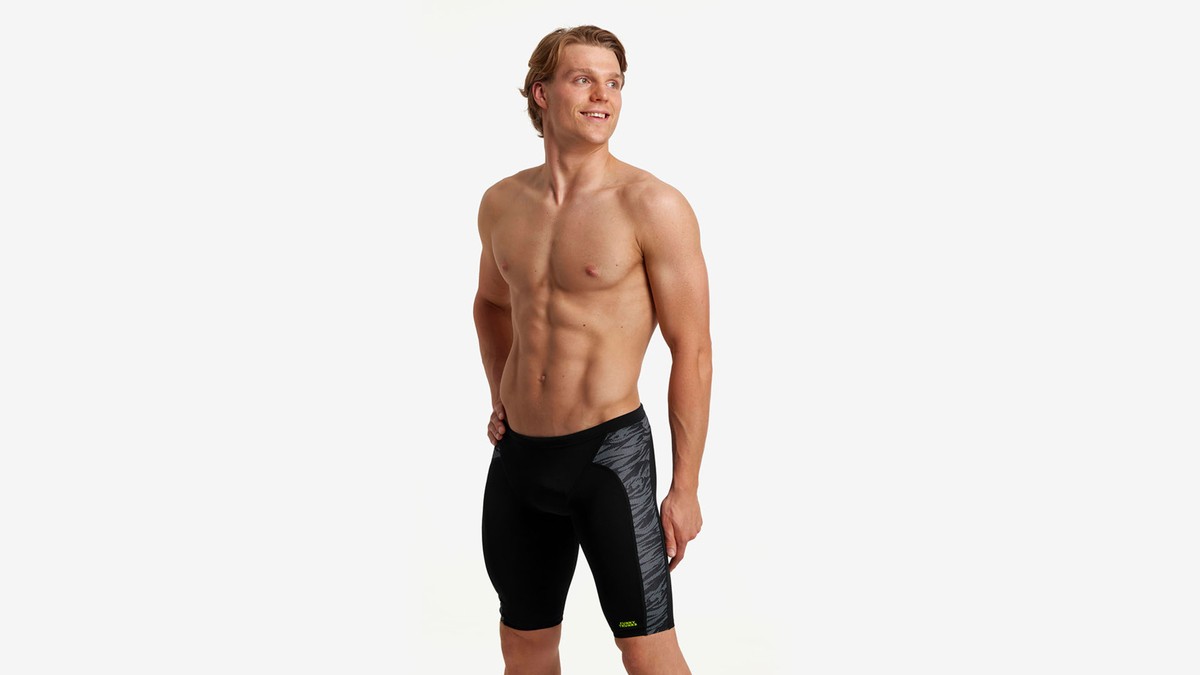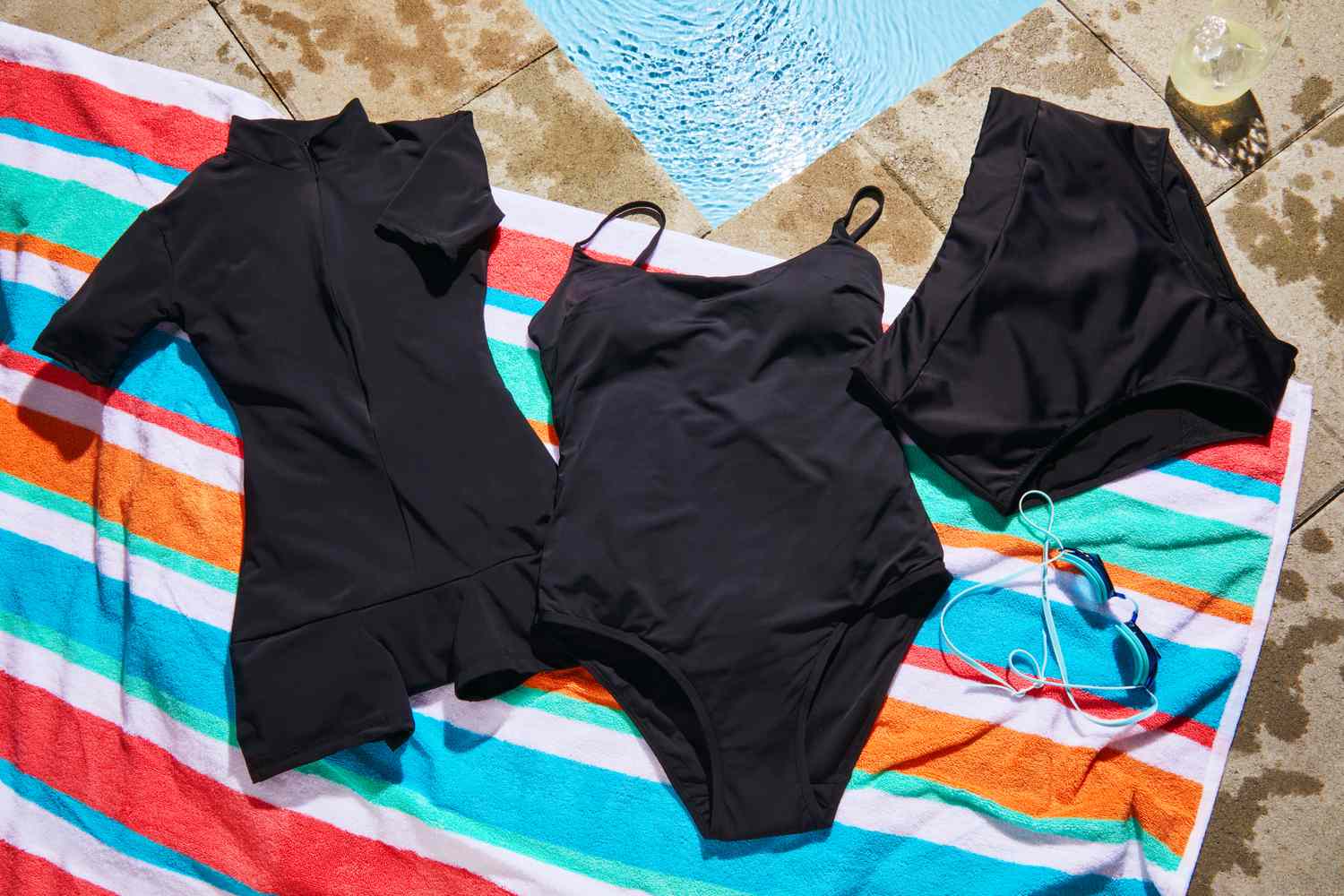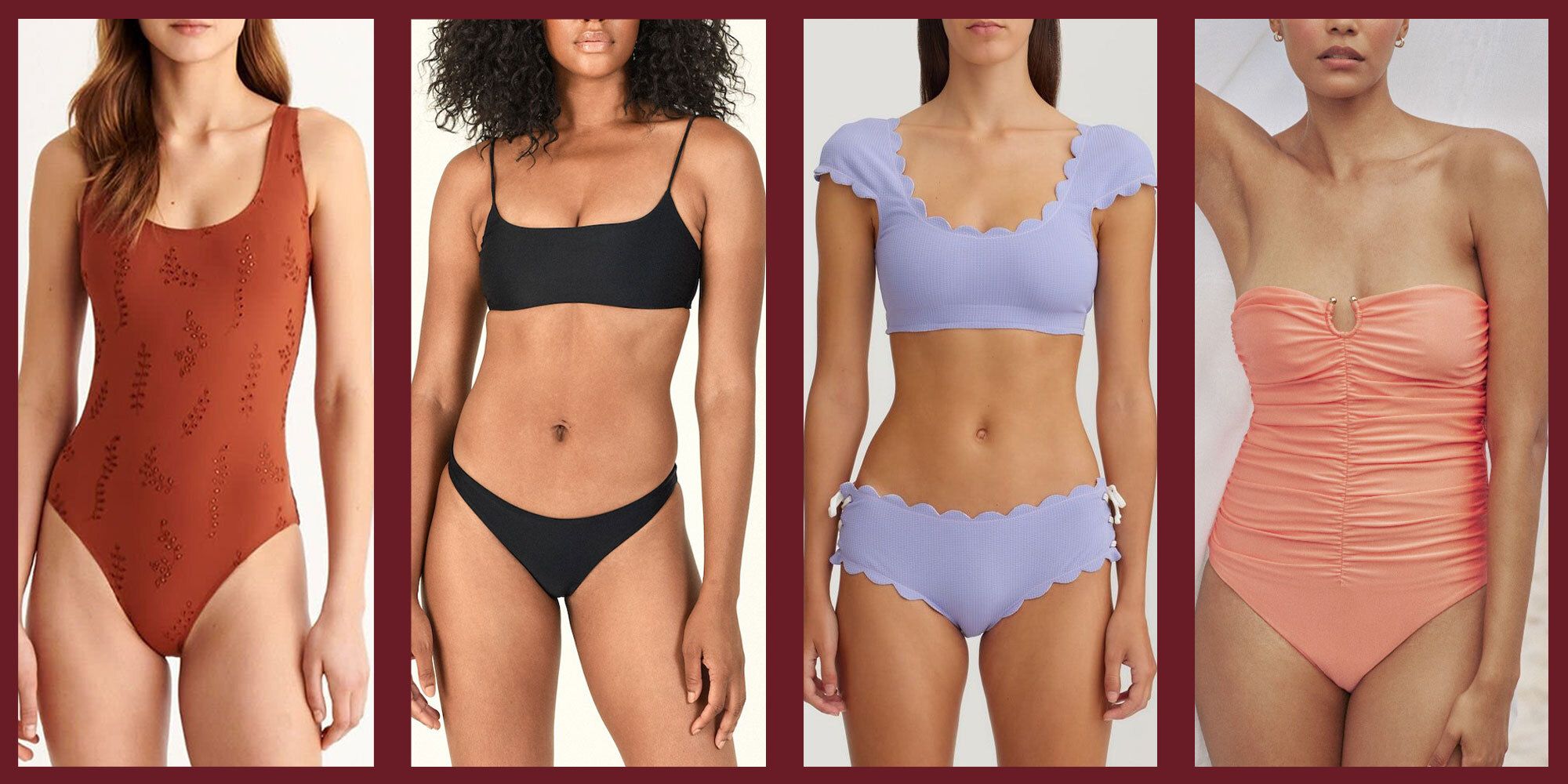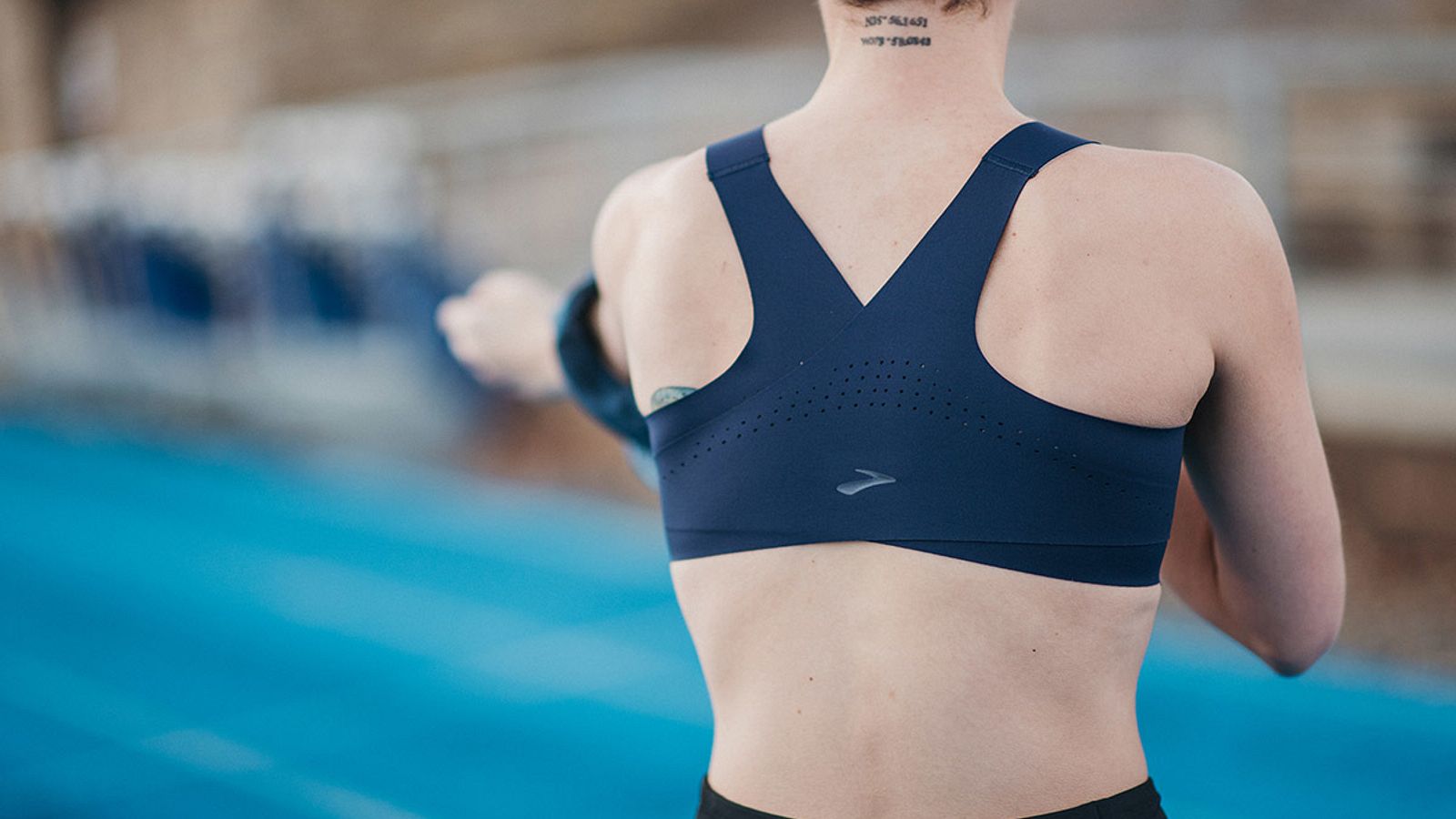Home>Women's Underwear>Swimwear>What Is Swimsuit Material Made Of


Swimwear
What Is Swimsuit Material Made Of
Modified: August 24, 2023
Discover what swimwear is made of and the different types of swimsuit materials available. Stay stylish and comfortable with the right fabric choice for your swimsuit.
(Many of the links in this article redirect to a specific reviewed product. Your purchase of these products through affiliate links helps to generate commission for Under-tec.com, at no extra cost. Learn more)
Table of Contents
Introduction
When it comes to enjoying the sunshine and taking a dip in the pool or the ocean, a comfortable and stylish swimsuit is essential. But have you ever wondered what goes into making a swimsuit? The material of a swimsuit plays a crucial role in its performance, fit, and durability. Understanding the different types of swimsuit materials can help you make an informed decision when choosing the perfect swimsuit.
Swimsuit materials have come a long way since the early days of woolen suits. Today, advanced fabrics are used to create swimwear that is not only fashionable but also provides the necessary support, stretch, and quick-drying properties. From polyester to nylon to spandex, each material has its unique characteristics, making it suitable for specific purposes and preferences.
In this article, we will dive deep into the world of swimsuit materials, exploring the properties and benefits of commonly used fabrics. Whether you are a professional swimmer, a beach enthusiast, or simply looking for a stylish swimsuit for your vacation, understanding the different materials will help you find the perfect fit for your needs and preferences. So, let’s take a closer look at the fabrics that make swimsuits functional, comfortable, and fashionable.
Overview of Swimsuit Material
Swimsuit material is specifically designed to withstand the harsh elements of water, chlorine, and sun exposure while providing comfort and flexibility. The ideal swimsuit material should be lightweight, quick-drying, and resistant to fading and stretching. It should also offer a good amount of stretch and support to ensure a snug fit and freedom of movement.
Most swimsuit materials are made from synthetic fibers, such as polyester, nylon, and spandex. These fabrics offer excellent durability and resistance to wear and tear. They are also known for their moisture-wicking properties, which help in keeping the body dry and comfortable even when exposed to water for extended periods.
Swimsuit materials are often engineered with specific features to enhance their performance. This includes UV protection to shield the skin from harmful sun rays, chlorine resistance to prevent damage from pool chemicals, and saltwater resistance for those who enjoy swimming in the ocean.
With advancements in textile technology, swimsuit materials now come in a wide range of styles, patterns, and textures. Whether you prefer a sleek and shiny finish or a textured fabric with a matte look, there is a swimsuit material to suit every taste and preference.
Additionally, the material used in swimsuits can vary depending on the intended use. For competitive swimmers, hydrodynamic fabrics that reduce drag and increase speed are preferred. For recreational swimmers, comfort and flexibility are key factors. And for those who prefer more modesty, there are materials with higher coverage and greater opacity.
Swimsuit material is not just about functionality and performance; it also plays a significant role in the overall design and style of the swimsuit. Different materials offer different levels of stretch, drape, and texture, allowing designers to create swimwear that is not only functional but also visually appealing.
Commonly Used Fabrics
There are several fabrics that are commonly used in the construction of swimwear. Each fabric has its unique characteristics and benefits. Let’s take a closer look at the most commonly used swimsuit materials:
- Polyester: Polyester is a popular choice for swimwear due to its excellent durability and resistance to chlorine. It is known for its ability to retain its shape and color even after prolonged exposure to harsh pool chemicals. Polyester fabrics also offer UV protection, making them ideal for outdoor swimming. They are quick-drying and provide a comfortable fit.
- Nylon: Nylon is another widely used fabric in swimwear. It is known for its lightweight and soft feel, making it comfortable to wear for long periods. Nylon has excellent stretch and recovery properties, allowing for flexibility and ease of movement. It is also quick-drying and resistant to wrinkles and shrinkage. Nylon fabrics can have varying degrees of opacity, ranging from sheer to more opaque options.
- Spandex: Spandex, also known as Lycra or elastane, is a synthetic fiber that is renowned for its exceptional stretch and recovery. It is often blended with other fabrics to provide extra elasticity and a snug fit. Spandex allows for maximum flexibility and freedom of movement, making it a preferred choice for athletes and active swimmers. It also helps in maintaining the shape and form of the swimsuit over time.
- Blends: Many swimsuit materials are made from a blend of different fibers to combine the desired properties of each fabric. For example, a polyester-spandex blend can offer the durability of polyester with the stretch and flexibility of spandex. Blended fabrics can provide the perfect balance of comfort, support, and performance.
These are just a few examples of the commonly used fabrics in swimwear. However, it’s important to note that there are other specialty fabrics available in the market, such as recycled materials or fabrics with enhanced performance features. When choosing a swimsuit, consider the intended use, personal preferences, and the specific characteristics of each fabric to find the perfect fit for your needs.
Polyester
Polyester is one of the most commonly used fabrics in swimwear due to its exceptional durability and resistance to chlorine. This synthetic material is known for its ability to retain its shape and color, even after prolonged exposure to pool chemicals. The strong and resilient nature of polyester ensures that your swimsuit will last for a long time, making it a popular choice for both recreational swimmers and professional athletes.
One of the key advantages of polyester is its ability to dry quickly. Polyester fabrics have excellent moisture-wicking properties, allowing water to evaporate rapidly from the material’s surface. This means that your swimsuit will dry faster, reducing the discomfort of sitting in wet swimwear and making it a practical choice for beachgoers and pool enthusiasts.
Polyester swimwear fabrics also offer protection against harmful UV rays. The tight molecular structure of polyester provides a certain level of defense against the sun, reducing the risk of sunburn and skin damage. However, it’s essential to note that the level of UV protection can vary depending on the fabric’s thickness and any additional UV-blocking treatments applied to the material.
Another advantage of polyester is its resistance to stretching and fading. The fibers are designed to maintain their shape and color, ensuring that your swimsuit does not become baggy or lose its vibrancy over time. This makes it a reliable choice for frequent use and long-term wear.
While polyester offers many benefits, it is worth mentioning that the fabric may not be as breathable as other materials. It has a lower level of natural moisture absorption, which means that it may not wick away sweat as effectively as some other fabrics. However, modern polyester blends often incorporate moisture-wicking technology, enhancing the fabric’s breathability for added comfort.
In summary, polyester is a versatile and durable fabric that is commonly used in swimwear. Its ability to resist fading and stretching, along with its quick-drying and UV-protective properties, makes it a popular choice for swimwear manufacturers. Keep in mind that the specific performance features of polyester can vary, so it’s important to check information provided by the manufacturer when selecting a swimsuit.
Nylon
Nylon is another commonly used fabric in the world of swimwear. Known for its lightweight and soft feel, nylon is a popular choice for those seeking comfort and flexibility in their swimsuits. This synthetic fiber is highly durable and resistant to wear and tear, ensuring that your swimwear will withstand regular use and maintain its shape over time.
One of the key advantages of nylon is its excellent stretch and recovery properties. It has a high elasticity, allowing for a snug and comfortable fit that contours to your body. The fabric stretches with your movements, providing freedom and flexibility when swimming or engaging in water activities. Nylon also has quick-drying properties, making it a practical choice for those who want to minimize the time spent in wet swimwear.
Nylon swimsuits are available in a variety of finishes and thicknesses. Some nylon fabrics have a sheer and lightweight appearance, while others offer a more opaque and substantial feel. This versatility allows for a wide range of styles and designs, catering to different preferences and providing options for both modest and revealing swimwear.
Additionally, nylon is resistant to wrinkles and shrinkage. This ensures that your swimsuit will maintain its original shape and size, even after being exposed to water and heat. The fabric is also known for its colorfastness, which means that it retains its vibrant color even after multiple washes, maintaining the aesthetic appeal of your swimwear.
While nylon is a versatile and durable material, it has a lower resistance to chlorine compared to polyester. If you regularly swim in chlorinated pools, it is important to rinse your nylon swimsuit thoroughly after each use to remove any residual chlorine. This will help prolong the life of your swimsuit and prevent discoloration or damage to the fabric.
In summary, nylon is a popular choice for swimwear due to its lightweight, soft feel, and excellent stretch and recovery properties. Its quick-drying nature, resistance to wrinkles and shrinkage, and colorfastness make it a reliable fabric for creating comfortable and long-lasting swimsuits. Just keep in mind that proper care and maintenance, especially when exposed to chlorine, are essential to preserve the quality and longevity of your nylon swimwear.
Spandex
Spandex, also known as Lycra or elastane, is a synthetic fiber that is widely used in swimwear for its exceptional stretch and recovery properties. This elastic material allows swimwear to fit snugly and comfortably, providing maximum flexibility and freedom of movement in the water. It is a popular choice for athletes, regular swimmers, and anyone who values comfort and performance in their swimwear.
One of the key advantages of spandex is its ability to stretch up to five times its original length and return to its original shape without losing its elasticity. This ensures a perfect, form-fitting silhouette that hugs the body without feeling restrictive. The fabric’s stretch and recovery properties make it ideal for dynamic activities in the water, allowing for unrestricted movement while swimming or engaging in water sports.
In addition to its stretchiness, spandex is highly resistant to chlorine and other chemicals commonly found in pools. This makes it an excellent choice for swimmers who spend a significant amount of time in chlorinated water. Swimsuits made with spandex retain their shape and color, even with prolonged exposure to pool chemicals, ensuring durability and longevity.
Another advantage of spandex is its quick-drying nature. The fabric’s moisture-wicking properties help to draw moisture away from the skin, allowing it to evaporate quickly. This not only adds to the comfort of the swimmer but also prevents the development of bacteria and odors that can occur in damp environments. Quick-drying swimwear is particularly beneficial for prolonged water activities or when transitioning from water to land.
It is important to note that while spandex is a highly stretchable and comfortable fabric, it is often blended with other materials to provide additional benefits. Blending spandex with fabrics like polyester or nylon can enhance the durability, colorfastness, and overall performance of the swimsuit. The combination of spandex with other materials allows for a balance between stretch and support, resulting in a swimsuit that provides both comfort and longevity.
In summary, spandex is a popular fabric choice for swimwear due to its exceptional stretch and recovery properties. Its ability to provide a snug and comfortable fit, resistance to chlorine, quick-drying nature, and flexibility make it a preferred material for those seeking comfort and performance in their swimsuits. Whether you are a recreational swimmer or a competitive athlete, swimwear with spandex content offers the freedom of movement and support you need in the water.
Blends
Many swimsuit materials are created by blending different fibers to combine the desired properties of each fabric. These blends offer a balance of comfort, support, and performance, making them a popular choice for swimwear manufacturers and consumers alike.
One common blend in swimwear is polyester-spandex. This combination takes advantage of polyester’s durability and chlorine resistance, along with the stretch and flexibility provided by spandex. The resulting fabric offers the best of both worlds, providing a comfortable and long-lasting swimsuit that retains its shape and color even with frequent use.
Another popular blend is nylon-spandex. Nylon contributes its lightweight and soft feel, while spandex brings the stretch and recovery properties to the fabric. This combination creates a swimsuit that molds to the body, providing a comfortable and flexible fit for various water activities.
Blends can also include other fibers such as cotton or polyamide. These additions can enhance the overall feel and breathability of the fabric. However, it’s important to note that blends with natural fibers may have different performance characteristics compared to purely synthetic materials. They may be less resistant to chlorine or slower to dry, so it’s important to check the specific blend’s properties before making a purchase.
The advantage of using blends is that they can be tailored to suit different needs and preferences. By combining different fibers, manufacturers can create swimwear that offers a balance of stretch, support, durability, and comfort. These blends cater to diverse swimwear styles, whether it’s for active swimming, sunbathing, or leisurely beach strolls.
When considering swimsuits made from blends, it is essential to read the care instructions provided by the manufacturer. Different fibers may have specific care requirements, such as handwashing or avoiding high heat settings in the dryer. Following these instructions will help maintain the quality and longevity of the swimwear.
In summary, blends of different fibers offer a versatile solution for swimwear. These combinations take advantage of the unique properties of each fabric to create a comfortable, durable, and performance-driven swimsuit. Whether it’s a polyester-spandex or a nylon-spandex blend, these materials provide the flexibility, support, and style needed for a great swimwear experience.
Other Considerations
When it comes to choosing the perfect swimsuit material, there are a few other factors to consider. These additional considerations can help ensure that your swimwear meets your specific needs and preferences.
Design and Fit: While the material plays a crucial role, it’s also important to find a swimsuit that fits well and complements your body shape. Consider the design elements, such as straps, closures, and cut, that will enhance your comfort and style.
Intended Use: Think about how you plan to use your swimsuit. Are you looking for a suit for leisurely dips in the pool or one for intense swimming sessions? Different activities may require different features, such as increased durability, support, or hydrodynamics.
Coverage and Opacity: Swimsuits come in various coverage options, ranging from bikini cuts to full-coverage one-pieces. Consider your personal preferences and comfort level when choosing the level of coverage you desire. Additionally, some fabrics offer higher opacity, providing greater discretion and modesty.
Specialty Fabrics: Apart from the commonly used materials, there are also specialty fabrics available in the swimwear market. These materials may offer specific features like enhanced UV protection, sweat-wicking properties, or eco-friendly production methods. If these factors align with your priorities, exploring these specialty fabrics could be worthwhile.
Brand Reputation: Take into account the reputation of the swimwear brand. Established brands often prioritize quality materials and craftsmanship in their swimsuits, ensuring that you are investing in a reliable product.
By considering these factors alongside the choice of swimsuit material, you can find a swimsuit that not only suits your style but also meets your functional requirements and ensures a comfortable and enjoyable swimwear experience.
Conclusion
When it comes to choosing the right swimsuit, understanding the different materials used is crucial. Polyester, nylon, spandex, and blends are among the most commonly used fabrics in swimwear, each offering unique properties and benefits.
Polyester provides exceptional durability, chlorine resistance, and UV protection, making it ideal for frequent swimmers. Nylon offers a lightweight and soft feel, along with excellent stretch and recovery properties, ensuring a comfortable and flexible fit. Spandex, on the other hand, provides maximum stretch and flexibility for a snug and unrestricted swimwear experience. Blends combine the advantages of different fibers to create versatile swimwear that balances comfort, support, and durability.
When considering swimwear material, it’s important to factor in other considerations such as design, intended use, coverage, and the reputation of the brand. By taking all these factors into account, you can find a swimsuit that not only looks great but also offers the functionality and performance you need.
Whether you’re an avid swimmer, a beach enthusiast, or someone looking for a stylish swimwear option, understanding the materials used in swimsuits will help you make an informed decision. So dive into the world of swimwear materials and choose the perfect swimsuit for your next aquatic adventure!










